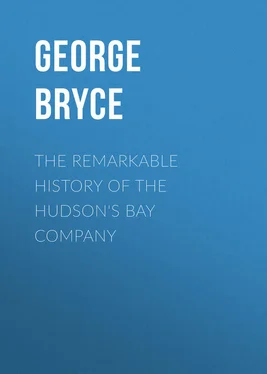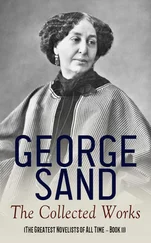George Bryce - The Remarkable History of the Hudson's Bay Company
Здесь есть возможность читать онлайн «George Bryce - The Remarkable History of the Hudson's Bay Company» — ознакомительный отрывок электронной книги совершенно бесплатно, а после прочтения отрывка купить полную версию. В некоторых случаях можно слушать аудио, скачать через торрент в формате fb2 и присутствует краткое содержание. Издательство: Иностранный паблик, Жанр: foreign_antique, foreign_prose, на английском языке. Описание произведения, (предисловие) а так же отзывы посетителей доступны на портале библиотеки ЛибКат.
- Название:The Remarkable History of the Hudson's Bay Company
- Автор:
- Издательство:Иностранный паблик
- Жанр:
- Год:неизвестен
- ISBN:нет данных
- Рейтинг книги:3 / 5. Голосов: 1
-
Избранное:Добавить в избранное
- Отзывы:
-
Ваша оценка:
- 60
- 1
- 2
- 3
- 4
- 5
The Remarkable History of the Hudson's Bay Company: краткое содержание, описание и аннотация
Предлагаем к чтению аннотацию, описание, краткое содержание или предисловие (зависит от того, что написал сам автор книги «The Remarkable History of the Hudson's Bay Company»). Если вы не нашли необходимую информацию о книге — напишите в комментариях, мы постараемся отыскать её.
The Remarkable History of the Hudson's Bay Company — читать онлайн ознакомительный отрывок
Ниже представлен текст книги, разбитый по страницам. Система сохранения места последней прочитанной страницы, позволяет с удобством читать онлайн бесплатно книгу «The Remarkable History of the Hudson's Bay Company», без необходимости каждый раз заново искать на чём Вы остановились. Поставьте закладку, и сможете в любой момент перейти на страницу, на которой закончили чтение.
Интервал:
Закладка:
The abstract question of whether such monopoly may rightly be granted by a free government is a difficult one, and is variously decided by different authorities. The "free trader" was certainly a person greatly disliked in the early days of the Company. Frequent allusions are made in the minutes of the Company, during the first fifty years of its existence, to the arrest and punishment of servants or employés of the Company who secreted valuable furs on their homeward voyage for the purpose of disposing of them. As late as half a century ago, in the more settled parts of Rupert's Land, on the advice of a judge who had a high sense of its prerogative, an attempt was made by the Company to prevent private trading in furs. Very serious local disturbances took place in the Red River Settlement at that time, but wiser counsels prevailed, and in the later years of the Company's régime the imperative character of the right was largely relaxed.
The Charter fittingly closes with a commendation of the Company by the King to the good offices of all admirals, justices, mayors, sheriffs, and other officers of the Crown, enjoining them to give aid, favour, help, and assistance.
With such extensive powers, the wonder is that the Company bears, on the whole, after its long career over such an extended area of operations, and among savage and border people unaccustomed to the restraints of law, so honourable a record. Being governed by men of high standing, many of them closely associated with the operations of government at home, it is very easy to trace how, as "freedom broadened slowly down" from Charles II. to the present time, the method of dealing with subjects and subordinates became more and more gentle and considerate. As one reads the minutes of the Company in the Hudson's Bay House for the first quarter of a century of its history, the tyrannical spirit, even so far at the removal of troublesome or unpopular members of the Committee and the treatment of rivals, is very evident.
This intolerance was of the spirit of the age. In the Restora tion, the Revolution, and the trials of prisoners after rebellion, men were accustomed to the exercise of the severest penalties for the crimes committed. As the spirit of more gentle administration of law found its way into more peaceful times the Company modified its policy.
The Hudson's Bay Company was, it is true, a keen trader, as the motto, "Pro Pelle Cutem" – "skin for skin" – clearly implies. With this no fault can be found, the more that its methods were nearly all honourable British methods. It never forgot the flag that floated over it. One of the greatest testimonies in its favour was that, when two centuries after its organization it gave up, except as a purely trading company, its power to Canada, yet its authority over the wide-spread Indian population of Rupert's Land was so great, that it was asked by the Canadian Government to retain one-twentieth of the land of that wide domain as a guarantee of its assistance in transferring power from the old to the new régime.
The Indian had in every part of Rupert's Land absolute trust in the good faith of the Company. To have been the possessor of such absolute powers as those given by the Charter; to have on the whole "borne their faculties so meek"; to have been able to carry on government and trade so long and so successfully, is not so much a commendation of the royal donor of the Charter as it is of the clemency and general fairness of the administration, which entitled it not only officially but also really, to the title "The Honourable Hudson's Bay Company."
CHAPTER III
METHODS OF TRADE
Rich Mr. Portman – Good ship Prince Rupert – The early adventurers – "Book of Common Prayer" – Five forts – Voting a funeral – Worth of a beaver – To Hudson Bay and back – Selling the pelts – Bottles of sack – Fat dividends – "Victorious as Cæsar" – "Golden Fruit."
The generation that lived between the founding of the Company and the end of the century saw a great development in the trade of the infant enterprise. Meeting sometimes at the place of business of one of the Committee, and afterwards at hired premises, the energetic members of the sub-committee paid close attention to their work. Sir John Robinson, Sir John Kirke, and Mr. Portman acted as one such executive, and the monthly, and at times weekly meetings of the Court of Adventurers were held when they were needed. It brings the past very close to us as we read the minutes, still preserved in the Hudson's Bay House, Leadenhall Street, London, of a meeting at Whitehall in 1671, with His Highness Prince Rupert in the chair, and find the sub-committee appointed to carry on the business. Captain Gillam for a number of years remained in the service of the Company as a trusted captain, and commanded the ship Prince Rupert . Another vessel, the Windingoo , or Wyvenhoe Pinck , was soon added, also in time the Moosongee Dogger , then the Shaftsbury , the Albemarle , and the Craven Bar k – the last three named from prominent members of the Company. Not more than three of these ships were in use at the same time.
The fitting out of these ships was a work needing much attention from the sub-committee. Year after year its members went down to Gravesend about the end of May, saw the goods which had been purchased placed aboard the ships, paid the captain and men their wages, delivered the agents to be sent out their commissions, and exercised plenary power in regard to emergencies which arose. The articles selected indicate very clearly the kind of trade in which the Company engaged. The inventory of goods in 1672 shows how small an affair the trade at first was. "Two hundred fowling-pieces, and powder and shot; 200 brass kettles, size from five to sixteen gallons; twelve gross of knives; 900 or 1000 hatchets," is recorded as being the estimate of cargo for that year.
A few years, however, made a great change. Tobacco, glass beads, 6,000 flints, boxes of red lead, looking-glasses, netting for fishing, pewter dishes, and pewter plates were added to the consignments. That some attention was had by the Company to the morals of their employés is seen in that one ship's cargo was provided with "a book of common prayer, and a book of homilies."
About June 1st, the ship, or ships, sailed from the Thames, rounded the North of Scotland, and were not heard of till October, when they returned with their valuable cargoes. Year after year, as we read the records of the Company's history, we find the vessels sailing out and returning with the greatest regularity, and few losses took place from wind or weather during that time.
The agents of the Company on the Bay seem to have been well selected and generally reliable men. Certain French writers and also the English opponents of the Company have represented them as timid men, afraid to leave the coast and penetrate to the interior, and their conduct has been contrasted with that of the daring, if not reckless, French explorers. It is true that for about one hundred years the Hudson's Bay Company men did not leave the shores of Hudson Bay, but what was the need so long as the Indians came to the coast with their furs and afforded them profitable trade! By the orders of the Company they opened up trade at different places on the shores of the Bay, and we learn from Oldmixon that fifteen years after the founding of the Company there were forts established at (1) Albany River; (2) Hayes Island; (3) Rupert's River; (4) Port Nelson; (5) New Severn. According to another authority, Moose River takes the place of Hayes Island in this list. These forts and factories, at first primitive and small, were gradually increased in size and comfort until they became, in some cases, quite extensive.
Читать дальшеИнтервал:
Закладка:
Похожие книги на «The Remarkable History of the Hudson's Bay Company»
Представляем Вашему вниманию похожие книги на «The Remarkable History of the Hudson's Bay Company» списком для выбора. Мы отобрали схожую по названию и смыслу литературу в надежде предоставить читателям больше вариантов отыскать новые, интересные, ещё непрочитанные произведения.
Обсуждение, отзывы о книге «The Remarkable History of the Hudson's Bay Company» и просто собственные мнения читателей. Оставьте ваши комментарии, напишите, что Вы думаете о произведении, его смысле или главных героях. Укажите что конкретно понравилось, а что нет, и почему Вы так считаете.












